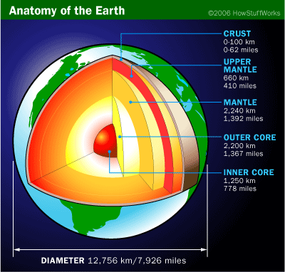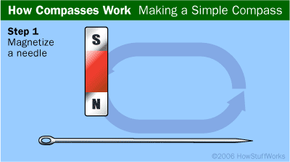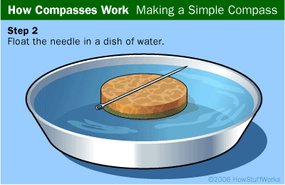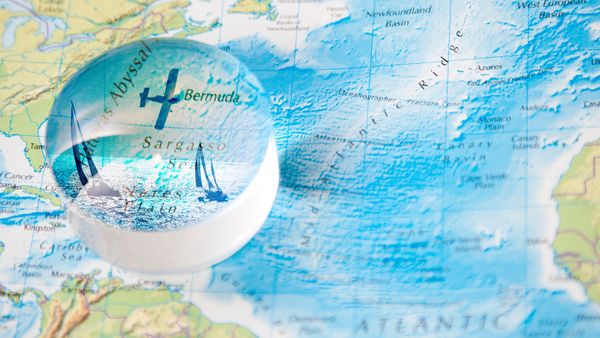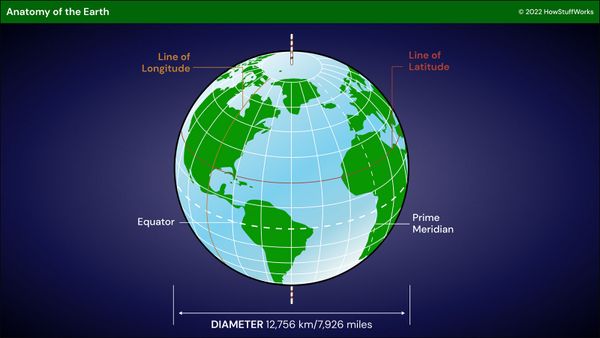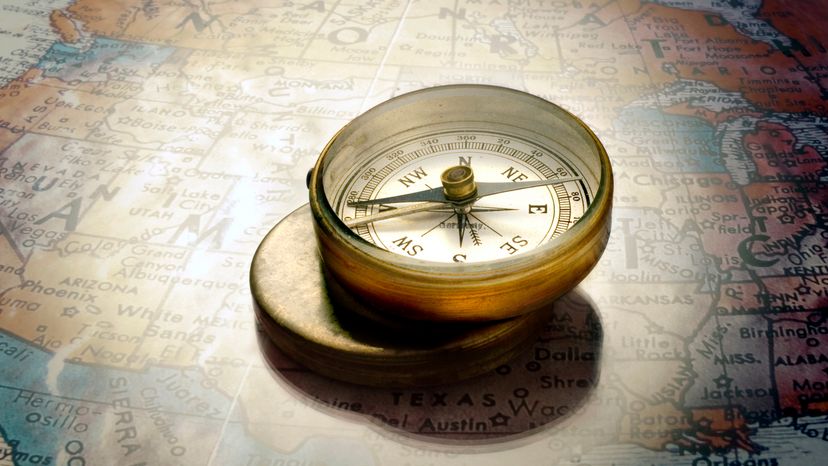
No matter where you stand on Earth, you can hold a compass in your hand and it will point toward the North Pole. What an unbelievably neat and amazing thing! Imagine that you are in the middle of the ocean, and you are looking all around you in every direction and all you can see is water, and it is overcast so you cannot see the sun... How in the world would you know which way to go unless you had a compass to tell you which way is "up"? Long before GPS satellites and other high-tech navigational aids, the compass gave humans an easy and inexpensive way to orient themselves.
But what makes a compass work the way it does? And why is it useful for detecting small magnetic fields, as we saw in How Electromagnets Work? In this article, we will answer all of these questions, and we'll also see how to create a compass from scratch!
Advertisement
A compass is an extremely simple device. A magnetic compass (as opposed to a gyroscopic compass) consists of a small, lightweight magnet balanced on a nearly frictionless pivot point. The magnet is generally called a needle. One end of the needle is often marked "N," for north, or colored in some way to indicate that it points toward north. On the surface, that's all there is to a compass.

